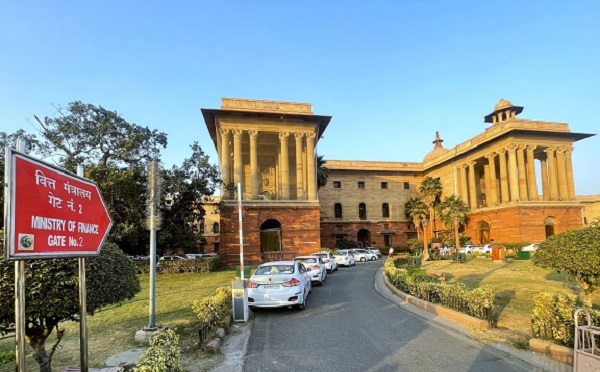.png)

T.K. Arun, ex-Economic Times editor, is a columnist known for incisive analysis of economic and policy matters.
April 28, 2025 at 4:28 AM IST
Recently, Mati Carbon, a company based in Madhya Pradesh’s Seoni, won the XPrize Carbon Removal grand prize of $50 million for its innovation in developing a carbon dioxide removal project and also a software platform for reliable accounting of the CO2 so removed.
CDR is the ugly duckling straggling behind an energetic, happy brood of quacking, dancing attention-seeking renewable energy fledglings traipsing along behind their proud climate warrior mother, to the delight and cheers of onlookers. Solar thermal, solar photovoltaic, wind, ocean waves, small modular nuclear reactors, geothermal, and colourless hydrogen trailing blue, green, pink and turquoise banners, to indicate the manner in which it became carbon-free – all these have wide recognition among those seeking to combat climate change.
Green hydrogen is produced by splitting water with electricity generated from a renewable source. Hydrogen, the emissions generated in whose production is captured and stored, is labelled blue. Pink or Red Hydrogen uses electricity from nuclear reactors for the electrolysis that splits water into hydrogen and oxygen. Turquoise hydrogen is produced by pyrolysis of natural gas, to produce solid carbon and hydrogen, a technology yet to go mainstream.
But removing carbon dioxide from the atmosphere tends to be dismissed as not just too expensive but also as deception, an excuse for continuing to burn fossil fuels on the ground that mitigation awaits in the form of carbon capture.
This has been changing. The Biden administration, way better at formulating and carrying out policy than at communicating it effectively to voters, had offered subsidies for carbon dioxide removal from the atmosphere. A couple of oil giants have commenced CDR projects to remove a million plus tonnes of CO2 a year. Europe’s market for carbon credits makes organised CDR worthwhile, even if the removed CO2 is not put to any particular productive use. The oil companies pump the captured CO2 down depleted wells to push out reluctant oil hiding at the bottom. Other CDR projects end up storing the captured carbon, carrying out CCS, or carbon capture and storage.
But the real solution is to turn the captured CO2 into usable products, the revenue from which would make carbon credits irrelevant. Climate change is a jargon-prone field, and utilising captured carbon yields CCU, Carbon Capture and Utilisation. In theory, there is no reason why the entire range of petrochemicals that are today derived from crude should not be manufactured from CO2 captured from the atmosphere. Innovative chemistry and industrial processes form the bridge yet to be fully built between theory and practice.
LanzaTech, for example, uses bacteria to convert captured CO2 into ethane, and its derivatives. A collaboration is producing sustainable aviation fuel from this, besides polythene. Arcelor Mittal’s plant at Ghent, Belgium styles itself as a steelanol plant, because the emissions from its blast furnace are captured and converted into fuel-grade ethanol, using LanzaTech’s technology.
Before anyone starts wild speculations about steelanol plants putting an end to Scotland’s principal export industry, let us understand that conversion of CO2 into alcohol merely scratches the surface of what is possible.
At university labs, scientists have converted CO2 into forms of pure carbon, and other compounds. Carbon, as carbon fibre, graphene, etc, is a valuable substance, even if not available as the allotrope diamond. If the processes to convert captured CO2 into carbon turn economical, as a result of sustained research, combating climate change would turn real.
Merely by reducing additional emissions, the world has not been able to slow, leave alone halt, the steady rise in the average global temperature, and the world is well on its way to temperatures 2 degrees Celsius and more above pre-industrial times. The only way to stabilise the climate is to remove CO2 from the atmosphere, and create net negative emissions.
The XPrize was set up to replicate the effects of the Orteig prize, worth $25,000, set up in 1919 to encourage trans-Atlantic air travel, which Charles Lindbergh famously won in 1927, not before many failed attempts had been made by several teams in ever-improving aircraft. The first XPrize, announced in 1997 and awarded in 2004, the Ansari XPrize worth $10 million was meant to catalyse a private space industry, and the winner’s model was licensed by Richard Branson to convert into the Virgin Galactic.
There have been multiple XPrizes for different areas of human progress, funded by different entities. The Carbon Removal XPrize was funded by the Musk Foundation. The prize was set up in 2021, long before Musk joined hands with climate change denier Donald Trump.
Apart from the Grand Prize, there are awards for runners up as well. Some of the 20 projects that made it to the short-list offer technology and equipment to convert crop stubble into biochar, one of them, Applied Carbon promising to do it in situ, holding out much interest to India, especially the states of the Northwest, where stubble burning adds to the pollution.
This particular XPrize focused on rock weathering, cleaning the ocean of CO2, so that fresh CO2 from the air can dissolve in it, and of trapping the carbon in biomass into mineralised forms that would take a thousand years to get back to the atmosphere.
Technologies to produce usable carbon have not been in focus. That is what needs to be promoted, in order to create sizeable net negative emissions year after year.
In the fairytale, the ugly duckling turned into a swan, outstripping the rest of the brood in beauty and grace. That cannot be taken for granted when it comes to carbon capture in the real world. It needs hard work, and funds.




